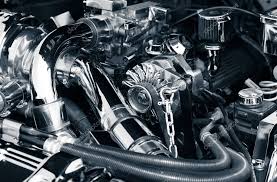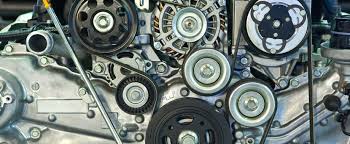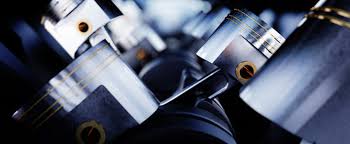What parts should be replaced when rebuilding an engine?
Steps of an Engine Rebuild
Steps of an Engine RebuildIf you love your car but your engine is no longer usable, you might consider a rebuild instead of buying a new vehicle. When an expert mechanic remanufactures your engine, you can trust that it will become reborn in pristine condition, allowing you to drive your vehicle for potentially hundreds of thousands of more miles. Here’s a look at five steps of successfully remanufacturing an engine.
Remove/Inspect
To start the process, all engine parts must be removed, disassembled, and cleaned. After all components have been cleaned bare, they are then inspected for wear and tear, at which point they’ll be prepared to machine them to original factory specifications.
Machining
Through machining, parts will be smoothened, allowing them to once again work together flawlessly. As part of this process, the engine block is honed and the crankshaft is ground. Also, bearing surfaces and chamfer oil passages will be micropolished. Other parts of the job include connecting rods being straightened and cylinder heads being resurfaced. The tech will also address any other parts that need to be smoothened.
Reassemble Engine
This process will include the installation of a number of new parts, such as: bearings, timing belt, gears, seals, and gaskets.
Testing
A test will then be conducted to check for proper compression and oiling, after which any necessary adjustments will be made.
Reinstallation
Once the rebuild is complete and testing is successful, the engine will be reinstalled and ready for the road.

Why rebuild an engine
There are two main reasons a rebuild would likely be necessary. The first is worn engine bearings, the second involves piston rings that are not seating well. The moving parts of the engine are mounted on engine bearings that are lubricated by engine oil, thus allowing the crankshaft and camshaft and other parts to move freely. Over time the bearings will wear out, resulting in a need to replace them. Poorly seating piston rings will result in blow by, which allows oil to be burnt in the combustion chamber.
What happens during a rebuild?
During a rebuild the engine will be removed from the vehicle, torn down to its bare parts, and inspected for wear and tear. Upon analysis parts will either be machined smooth to return them to a good condition, when applicable. Other times parts may need to be completely replaced. Piston rings and bearings are often replaced, along with pistons themselves when necessary. The engine will be reassembled and installed back in the vehicle, in a like-new condition.
Signs I may need a rebuild
There are a few key signs to look for in your vehicle. If you notice any of the following it may be time for an engine rebuild.
- Oil consumptions – If you notice your oil level regularly falling or if you need to add oil to the engine between oil changes, then chances are a rebuild is required. This is often a sign of blow by. You may also notice blue exhaust smoke.
- White exhaust smoke – If you spot excessive exhaust smoke, especially when the engine is cold, it could be a sign of coolant mixing with the gasoline, which is a clear indication of a major problem.
- Knocking noises – Worn engine bearings will produce a knocking or chattering noise that will rise and fall with the engine RPMs.

Should I Rebuild My Exisiting Engine, Or Replace It With A Remanufactured Engine?
There are pros and cons to each choice. First, is your old engine rebuildable? Not all are. If the block is cracked or otherwise severely damaged, rebuilding it is likely not an option. Are the needed internal parts available? The aftermarket does a great job in supplying components for the more popular engines. However, you may want to first check availability. On a more practical level: What is your skill set, and how much time do you have? The rebuilding process usually requires machine work, so even if you’re taking a week off to perform the rebuild, the outside work may slow you down. Rebuilding may make the most sense if you’re sure that the block can be reused, if the needed parts are available and affordable, and if you have the time and talent.
On the other hand: Why not consider a rebuilt (remanufactured) engine? Most “remans” are done by reputable companies and are accompanied by a warranty. In simple terms, you pull your old engine, and drop in the new one. (In reality, there are a number of components to switch over.) Reasons why you might not want a reman unit include cost (likely higher than rebuilding an engine yourself), availability (you might not have a choice if no remans are out there), and the logistics of getting a 600 lb. engine off a freight truck and returning the old one for core credit. It’s a very individualistic decision, so we’ll proceed and talk about BOTH rebuilding and replacing.

What are the different ways of repairing the engine?
The least expensive is a ring and valve job. This is done for a engine that has lost compression in one or more cylinders or is burning oil. A ring and valve job is done with the engine block in the car. It includes removing the head and rebuilding it, removing the pistons and re-ringing them, honing the cylinder walls if needed and replacing the rod bearings. The philosophy is to repair the engine as needed. Parts that are still good are not replaced. For instance, if the valve guide diameter is still within manufacturers specification, then they are not replaced. You pay for what you get, so if your engine is less damaged then it costs less. Usually you will be quoted for the basic job and after inspection of the components you will get a call back with a more accurate estimate. A ring and valve job can not be done if the cylinder walls are worn beyond specification, the crank is worn, or the deck surface is warped or irregular. These are things that can not be inspected until the engine is taken apart. All machine work for the ring and valve job is done here at Art’s Automotive.
The next option is an in-house rebuild. This repair can fix pretty much any engine problem. Often this type of rebuild starts out as a ring and valve job where worn cylinder walls were found, requiring boring. For this repair the engine block is removed from the car. It includes rebuilding the head, boring the cylinders oversized and new pistons, new timing components, decking the block, replacing the rod and main bearings, replacing the freeze plugs, and other repairs as necessary. The philosophy is to repair the engine as needed. For instance, if the crank journals do not need to be ground undersized, then they aren’t. You pay for what you get so if your engine is less damaged you pay less. Usually you will be quoted for the basic job and after inspection of the components you will get a call back with a more accurate estimate. Art’s Automotive may not do all the machine work for this type of repair. For instance, we cannot service rods or grind cranks, but we will double check all machine work and do the final cleaning and assembly.
The third and most expensive way repair the engine is a rebuilt exchange. The philosophy is to repair everything whether it is needed or not. For instance, a crank in usable condition would be ground undersize anyway. Unfortunately, since Densmore Engines closed, we don’t have a supplier of exchange units that we fully trust. If this option is chosen, the warranty for the engine will be with the supplier of the engine, and any labor warranty will need to be purchased through them as well. We have seen some truly horrible workmanship from rebuilders who have major OE contracts.
Why did the engine go bad in the first place?
This is important to consider. If the engine overheated due to a partially clogged radiator and a new engine is installed without addressing this, the new engine will surely fail too. If your maintenance was spotty and you don’t change your habits, then the new engine will fail as well. There usually is a correctable reason for engine failure. Most of the engines we work on will last the life of the car without needing a rebuild. We have one customer with almost 400,000 miles on her original engine. There are of course fluky failures like an Integra that burned a hole in the head behind the back side of the valve seat at 40,000 miles and an Civic that dropped a valve for no apparent reason, but problems like these are rare. So if the cause of the engine failure in not apparent to you, be sure to ask.